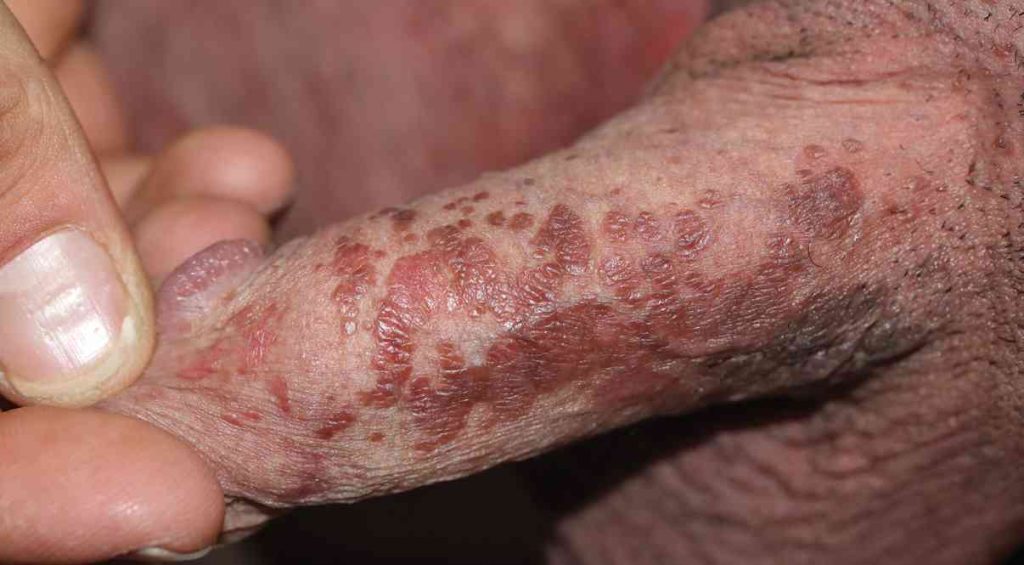What is Penile Melanosis
Penile melanosis is a benign skin condition characterized by dark spots or patches on the penis. While it may cause concern for some individuals, it is essential to recognize that penile melanosis is generally harmless and unrelated to serious health issues. This article will explore the causes, symptoms, diagnosis, treatment options, self-care tips for seeing a doctor, and preventive measures for penile melanosis.
Causes of Penile Melanosis
The exact cause of penile melanosis is not entirely clear. However, it is believed to be related to increased melanin production within the skin cells, leading to hyper-pigmentation. Factors that may contribute to this condition include:
- Genetic predisposition: Some individuals may have a genetic tendency to develop skin hyper-pigmentation.
- Hormonal fluctuations: Hormonal changes during puberty, aging, or certain medical conditions can influence melanin production.
- Sun exposure: Ultraviolet (UV) rays from the sun can exacerbate skin pigmentation issues.
Symptoms of Penile Melanosis
Penile melanosis typically presents as flat, dark spots or patches on the penis. These spots may vary in size and color, ranging from brown to black. The affected skin areas are usually painless and do not cause any discomfort. It’s important to note that penile melanosis should not be confused with genital warts, melanoma, or other severe skin conditions, which may have different characteristics.
Suppose you notice any unusual changes in your genital skin. In that case, seeking medical advice for a proper diagnosis is crucial. A dermatologist or urologist will typically physically examine the affected area. Sometimes, a biopsy may be recommended to rule out any underlying issues. A biopsy involves removing a small sample of the affected skin for microscopic examination.
What Does Penile Melanosis Look Like?
Penile melanosis Pictures, Penile melanosis image

This condition also known as penile lentiginosis, presents as small, flat, brown-to-black spots or patches on the skin of the penis. The appearance may vary among individuals, but some common characteristics include:
Color: The spots associated with penile melanosis typically have a dark brown or black hue. They can range from a lighter brown to a more profound or nearly black shade.
Size and Shape: The diameter of these spots may vary from a few millimeters to a centimeter or more. Generally, they exhibit an oval or round shape.
Texture: The spots usually have a flat and smooth texture without any raised or rough areas.
Distribution: Penile melanosis spots can appear on different parts of the penis, including the glans penis (head of the penis), foreskin, or shaft. They may occur in a localized area or be scattered across multiple regions.
Treatment Options & Removal
Penile melanosis is generally benign and does not require treatment for cosmetic reasons. However, if the condition causes significant distress or if there’s uncertainty about the diagnosis, treatment options may include:
- Topical Treatments: Dermatologists may prescribe topical creams containing retinoids or steroids to lighten the dark spots gradually.
- Laser Therapy: Laser treatments can effectively target and reduce hyper-pigmented areas.
- Cryotherapy: Freezing the affected areas with liquid nitrogen can help reduce pigmentation.
Self-Care Tips
While penile melanosis does not usually require extensive medical intervention, some self-care tips can be beneficial:
- Sun Protection: Minimize sun exposure on the genital area by wearing protective clothing or sunscreen with high SPF.
- Good Hygiene: Maintain good genital hygiene to prevent any secondary infections.
- Avoid Self-Treatment: Refrain from using over-the-counter creams or remedies without consulting a healthcare professional.
When to See a Doctor
It is essential to consult a healthcare professional if:
- You notice any new or changing spots on the penis.
- The pigmented areas exhibit irregular borders, multiply, or become itchy or painful.
- You have concerns about the appearance of your genital skin.
Prevention
Preventing penile melanosis involves maintaining a healthy lifestyle and protecting your skin:
- Avoid excessive sun exposure to the genital area.
- Wear protective clothing, such as swim trunks or board shorts, when engaging in outdoor activities.
- Perform regular self-checks to monitor any changes in your genital skin.
Conclusion
Penile melanosis, while concerning for some, is generally a harmless skin condition. Understanding its causes, symptoms, and available treatments can alleviate anxiety and help individuals make informed decisions about seeking medical advice. Remember, any unusual changes in the genital area should be promptly examined by a healthcare professional to ensure an accurate diagnosis and appropriate management. Emphasizing sun protection and maintaining good hygiene are simple measures that can contribute to overall skin health and may help prevent the development of penile melanosis.





